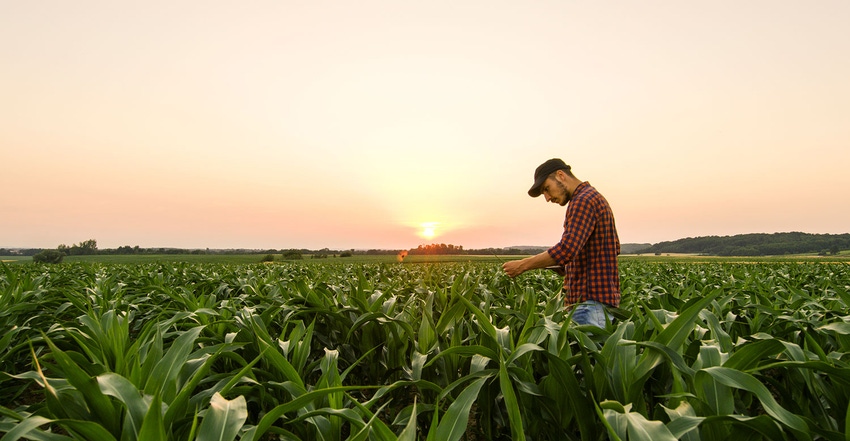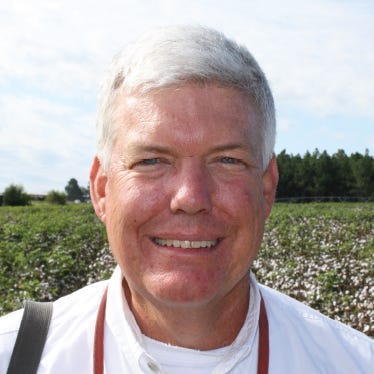
No one calls an Extension plant-disease specialist to look at their beautiful crop. Having a “Bob” in your field is like finding Jim Cantore from the Weather Channel in your neighborhood; everyone knows Jim isn't there to talk about your blue skies and sunshine.
Field visits to diagnose a problem followed up with a research-based, non-biased management recommendation are the “bread and butter” of what we do in Extension. Reflecting on field visits I have made with county agents during the 2021 season, I recognize that our comments to the growers generally fall into a few categories.
No. 1 - Take a deep breath, things aren't as bad as they seem.
Recently I was called to a peanut field as the grower had grown anxious on the amount of stem rot (white mold) he was finding. His sprayer was already loaded to apply the next fungicide, but he parked the tractor in the field uncertain if he had made the best decision.
When we arrived, the county agent and I were able to assure the grower that while there was white mold present, incidence was closer to 10%, not 50%. The white mold was inactive for the most part, and that disease “hits” are contained to “dinner plate” size. On many occasions I have been able to reassure growers that their field was not, in fact, being “eaten up by leaf spot,” and that it was some kind of burn, not disease.
Fairly often, the conclusion is that ether A) it wasn’t what you were worried it might be (e.g., it was Tomato spotted wilt, not CBR….), or B) if wasn’t nearly as catastrophic as you thought it was. However, when it comes to diseases and nematodes, it is ALWAYS best to be safe and ask early and often.
No. 2 - I wish you had called us earlier.
In February of 2021, Dr. Camp Hand, the newly minted UGA Cotton Team leader, and I stood with the local county agent looking over what had been a troubled field of cotton in 2020. The grower feared that the problem would affect his crop again in 2021.
Predictably, the stalks had deteriorated to a point where it was difficult to make heads or tails for a diagnosis; all we could do was speculate. Had we been called earlier, when the crop was in the field, we could have assayed plant tissue and collected soil samples. On that day we could only offer suggestions. The “ake-home message is that if we are not engaged early enough, it may be too late to diagnose the problem.
No. 3 - The reason you are seeing this now is because …
More often than not, growers ask, “Why am I seeing this disease/nematode problem now?” I have come to realize that there are typically a few common answers. First, you are seeing it “now” because the problem, whatever problem it is, is severe enough that it catches your attention. Second, you are seeing it “now” because late in the season, the sum of everything else that has happened in a field, to include weather that delayed your fungicide applications, a shorter-than-hoped-for rotation, and use of one fungicide when you might have been better off with another one, adds up to a visible problem.
No. 4 - At this point, the best thing you can do is walk away and learn for next time.
This is the toughest thing to tell a grower. The grower knows there is a problem in the field, and that the problem will likely affect yield. But he is hoping that something that can be done, something that can be tried, to protect what is left. Sometimes, for example when you have lost 50% of your leaves to peanut leaf spot, or when southern corn rust runs up and down every row, it is simply too late. There is nothing to spray that will stop it. There is nothing to spray that will dry it up. Any further application will add expense but will not return income.
No. 5 - I don’t know what I am seeing.
By nature, we are in Extension because we want to give the grower the answers he or she needs to make the best management decisions. But sometimes we simply don’t know the answer, and we need to be upfront and tell you that. Recognizing that “I just don’t know” is the first step in calling upon additional expertise to find the answers, the best answers you need and deserve.
At the end of any visit, it is my hope to give you the answers you need. The answer to your "next step" can be determined by the equation “Best Solution” = (amount of disease in the field) + (type of disease in the field) + (growth stage of the crop) + (anticipated time until harvest) + (yield potential/value of the crop) – (cost of management options).
I look forward to seeing many of you soon, even if you don’t look forward to seeing me.
Kemerait is the UGA Extension plant pathologist.
Read more about:
ExtensionAbout the Author(s)
You May Also Like






